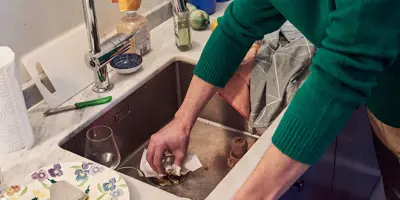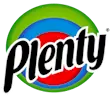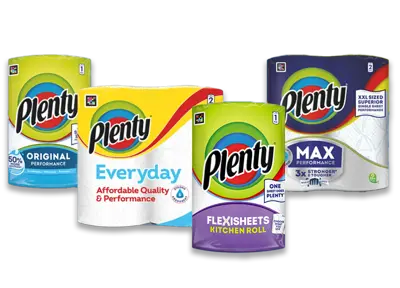11 people found this helpful
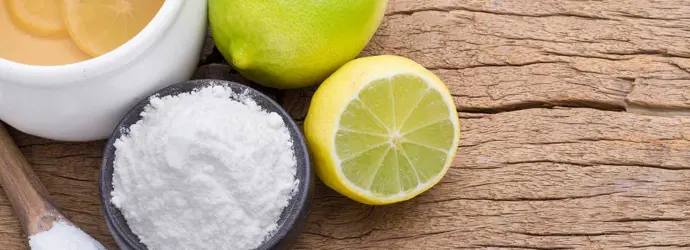
You might look at the grimy, brown ring around your bathtub, or the seemingly invincible orange stain on your lunchbox and think, "Only the toughest, biggest bottle of chemicals is going to be able to sort this out!” But no – sustainable cleaning methods can get rid of grime just as easily! From learning how to clean without chemicals to using less energy for washing, here are ten eco-friendly cleaning tips.
1. The role of lemons in sustainable home cleaning
If life gives you lemons, you could make lemonade – or, you could use them to learn how to clean without chemicals. If you’re looking for eco-friendly ways to clean your home, lemons are said to have antibacterial properties, which make them great for cleaning surfaces. Lemon’s acidity can contribute to sustainable home cleaning and it has been shown to have antimicrobial properties.1 Simply squeeze a lemon and scrub away at grease, gunk and water deposits using a strong piece of kitchen paper.
2. Using baking soda for eco-friendly house cleaning
Baking soda isn’t just for throwing over the kitchen counter when you’re whipping up a batch of chocolate muffins or squidgy sponge cakes. Adding baking soda to your eco-friendly cleaning list is a great way to start cleaning without chemicals. It has also been shown to have antibacterial properties, and as it’s abrasive, it can help get rid of more stubborn messes,2 so it’s great for cleaning your oven and brightening your toilet bowl and basin.
3. Help tackle mould with vinegar
Vinegar is said to have antimicrobial properties,3 making it a key eco-friendly cleaning player. There are plenty of high-powered chemical mould killers, but a squirt or two of white vinegar could work wonders. Combine it into a paste with baking soda for an even more effective solution.
4. Make your own eco-friendly cleaning solution!
We know that common kitchen ingredients like lemons, vinegar and baking soda make for excellent DIY, sustainable cleaning solutions. Why not take it one step further and make your own cleaning solution to have on hand under the kitchen sink? Combine all three of the above into an empty spray bottle (re-use one if you can) and you’ll have yourself one awesome, all-natural, all-purpose cleaner. You can even add orange peels or rosemary to give it a fresh fragrance!
5. Buy non-toxic eco-friendly cleaning products
If you’re going to buy cleaning products from the shop, why not opt for some of the non-toxic, environmentally friendly options available? With an ever-increasing focus on sustainability, the number of eco-friendly cleaning products – like those without petrochemicals – has grown. So, whether you’re experimenting with your own formula, or going off-the-shelf, cleaning without chemicals is as easy as ever!
6. Electricity-free eco-friendly cleaning tools
Vacuum cleaners and electric brushes may be good at slurping up those flyaway popcorn kernels and cookie crumbs after movie night, but there are sustainable cleaning options out there that don’t require energy. Instead of reaching for your electrical appliances, save on power by using a broom, or dustpan and brush, to sweep away dust where possible. It might not sound like a lot, but every bit of energy saved is a win in our book.
7. Switch from plastic sponges to paper towels for sustainable cleaning
Diving straight into that sticky pan you definitely didn’t burn sweet-n-sour sauce into and leave in the sink to marinate overnight can ruin a sponge with one swipe, leaving it to go straight to waste. Use a piece of strong and absorbent kitchen paper to tackle really dirty, greasy jobs.
Tip
Plenty The Original One is the perfect companion for eco-friendly cleaning. In addition to being absorbent and strong enough to cope with dirty jobs, it comes from sustainable FSC-certified sources too.
8. Make homemade air fresheners
You’ve spent all that time engaging in eco-friendly house cleaning, but what about keeping that fresh smell? Just like cleaning without chemicals, you can make your own chemical-free home fragrance with a selection of herbs like lavender and rosemary, tied in a little mesh or muslin bag.
9. Repurpose old toothbrushes for sustainable cleaning
Still got an old toothbrush or two practically sprouting new heads they’re so mouldy? Whose are they? Where did they come from? Well, it might be tempting, but don’t throw them away!
Old toothbrushes can easily be repurposed as cleaning utensils, for an eco-friendly way to clean your home. Use them to scrub hard-to-reach areas, grout lines, or even to clean the nooks and crannies of appliances. It's a sustainable and cheap way to give these items a second life. But remember not to put them back in the toothbrush holder when you’re done – pop them under the sink!
10. Harness the power of houseplants
Sustainable cleaning with... plants?! Houseplants not only bring natural beauty to your home but also play a vital role in eco-friendly house cleaning. They act as natural air purifiers, absorbing pollutants and releasing oxygen, which can significantly improve indoor air quality.4
Consider strategically placing houseplants like aloe vera, spider plants, or peace lilies in rooms prone to odours or moisture buildup. These plants can help reduce the need for artificial air fresheners and contribute to a cleaner and fresher living environment.4 Plus, they require minimal maintenance, making them a sustainable and good-looking addition to your home. And you can never, ever have too many houseplants.
Tip
Have a read of our guide on how to grow plants from cuttings to be extra eco-minded when implementing this sustainable cleaning method!
Environmentally friendly house cleaning – who knew it could be so easy? With these eco-friendly ways to clean your home, you can not only feel good about cleaning, but also save a few pennies, too, by avoiding expensive cleaning products.
For more eco-friendly tips, check out our guide on how to live more sustainably!
Eco-friendly cleaning with Plenty
Did you know Plenty Original roll sheets are now certified compostable?* That’s right! Now, when you’ve finished mopping up those splashes of tea or wiping the dog’s muddy paw prints off of the floor, you can pop Plenty kitchen roll sheets right on the compost heap.
But be sure that the mess you’re wiping away is a compostable one if you’re planning on turning those sheets into nutrient rich compost for your soil! If you’re unsure, check out our guide on what you can and can’t compost. Plenty compostable kitchen roll sheets can’t be composted if they’ve been used with some of the harsh chemicals found in cleaning products, so using some of our natural cleaning solutions above is even more of a no brainer!
If you’re a bit of a composting newbie, why not read our composting explainer? You’ll be a pro in no time. Want to know more about Plenty’s compostable kitchen roll sheets? Check out the answers to your frequently asked questions.
Plenty’s sustainability story
At Plenty, we’re always looking for ways to make both our products and our operations sustainable. Along with innovations to the products themselves – like certifying our sheets as compostable – we’re also focused on reducing the carbon footprint of our packaging** further and further. Plenty are committed to a goal of 100% of our packaging being recyclable and the use of 85% renewable or recycled materials in our packaging by 2025.
Want to know more? Why not check out some of our other sustainability initiatives.
*Plenty kitchen towels are certified as home and industrially compostable according to NF T 50-800 and EN14995.
**Carbon footprint reduction of the packaging due to use of recycled plastics vs. our previous packaging made with fossil-based plastics, based on Life Cycle Assessments conducted by Essity and verified by third party.
Sources:
1 Dhanavade, Dr. Maruti & Jalkute, Dr. Chidambar & Ghosh, Jai & Sonawane, Kailas. (2011). Study Antimicrobial Activity of Lemon (Citrus lemon L.) Peel Extract. British J. of Pharmacology and Toxicology. 2. 119-122.
Related articles
Easy tips for removing chewing gum from carpet and sofas
Removing chewing gum from carpets or upholstery is easy once you know what to do. View our simple guide on how to get gum out of a carpet or sofa.

How to clean (really) dirty wooden furniture
Want to know how to clean grime off wood furniture without chemicals? Here are three ways to clean a wooden table using things you already have at home.

6 natural cleaning products to use at home
Click to find out how to make natural cleaning products and natural disinfectant solutions for the home – and how to use them effectively.
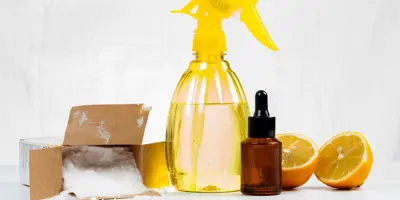
Spilt milk on the carpet? Here’s how to clean it up
Spilt milk on carpet areas? Read on for our easy to follow four-step guide on how to get milk out of the carpet.
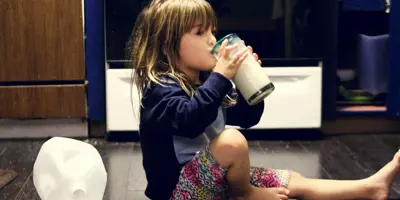
How to remove a pen stain from a hard surface
Find out how to remove ink stain marks from a number of different surfaces. Discover pen stain removal techniques for wood, floors and walls.

5 house cleaning tips and printable house cleaning schedule
From unexpected visitors, to parties you forgot you’d planned, learn how to clean your house fast with our 5 house cleaning tips and house cleaning checklist.
